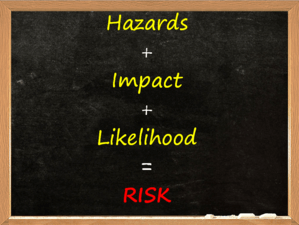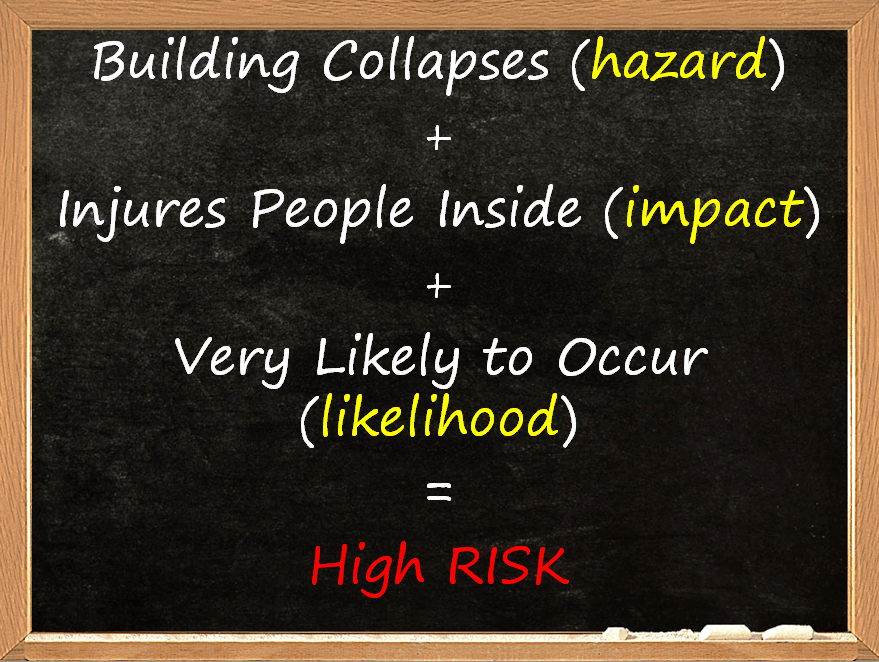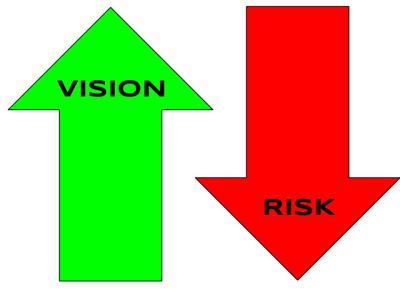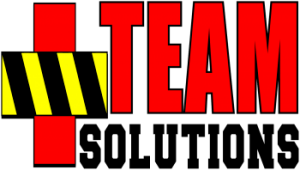"Protect YOURSELF ... Protect YOUR TEAM ... Protect YOUR VICTIM ... in that order.
And that order never changes."
Among the things that can go wrong during a disaster, a responder injury is among the worst. A responder is there to help the victims so when one becomes a victim, the problem becomes exponentially worse.
Minimizing responder injury is done by carefully managing or minimizing the level of risk.
And risk is managed or minimized by identifying and considering the following equation:
Hazards + Impact + Likelihood = RISK

Let's examine the risk of eating a whole Habanero pepper.
Eating a Habanero pepper (HAZARD) + GI distress (IMPACT) + Likely (LIKELIHOOD)
=
High Risk! (RISK)
With risk, we have several options to mitigate - or 'treat' - that risk. In no particular order:
Most of the time, we arrive at these conclusions quickly and even intuitively. In a complex disaster environment, however, it may be beneficial to consider each element in more detail before placing yourself, your team or your victim at increased risk.
Faced with a damaged building and being tasked with deciding whether it is a GO or NO-GO for continued occupancy or operations, the formula may look like this:

The above risk treatments may each be appropriate at any given time during an incident.
For instance, for the risk of a building collapse, you may recommend to:
How is the risk of injury assessed?
For starters, know that it is extremely difficult to assess for several legitimate reasons:
- Debris obscures key hazards (cracked pillars, leaking gas, energized electrical wires, etc.)
- Different construction types and materials create a labyrinth of interconnected building strengths and weaknesses (wood v. metal v. aluminum, etc.)
- Ongoing threat of damage (secondary collapse from rescue efforts, aftershocks or just plain gravity)
Therefore, when performing a Preliminary Damage Assessment, watching for and communicating as many hazards as possible will increase the opportunity to assign risk factors to them.

How do we reduce risk?
Risk is ever-present. Especially in a disaster. To reduce our risk and increase our safety, there are three (3) primary solutions:
#1 - Proper Attitude
It has been said the most useful thing an OLD fireman can tell a YOUNG fireman is to learn how to live long enough to be an OLD fireman.
Even though poor choices are not limited to the young and inexperienced, a big-picture attitude (like 'doing the most good for the most people' or 'make sure you get home every day') helps to promote better choices at the task level.
#2 - Proper Training
We can only do what we are trained to do. If we want to mitigate a collapse risk by using spot T shores or a laced-post box, we must be properly trained for that task. There are no shortcuts.
#3 - Proper Equipment
Having a tool and knowing how to use that tool should be one in the same. A 'hotstick' used to detect electrical current that is not used within its limitations may needlessly increase the risk to your team.
Managing risk in a disaster environment is an ongoing activity that involves the eyes, ears and collective effort of all responders. While the only low-risk response is the one where we stay at home in bed, there are ways to maximize our ability to 'do the most good for the most people' while also maximizing our own life safety.
An informed risk analysis benefits both responders and victims.
Please review the below topics in order to complete this lesson, . In the next lesson, we will explore the different types of damage that you will be assessing.
